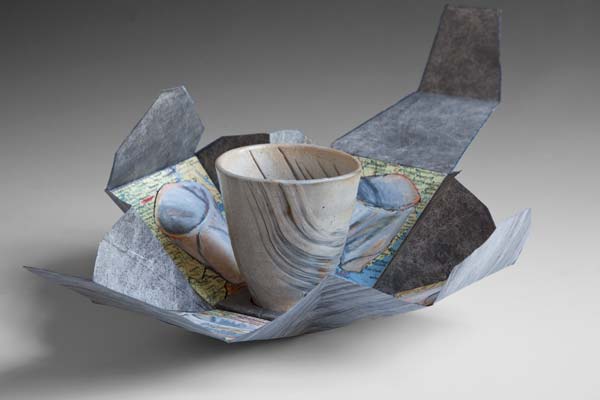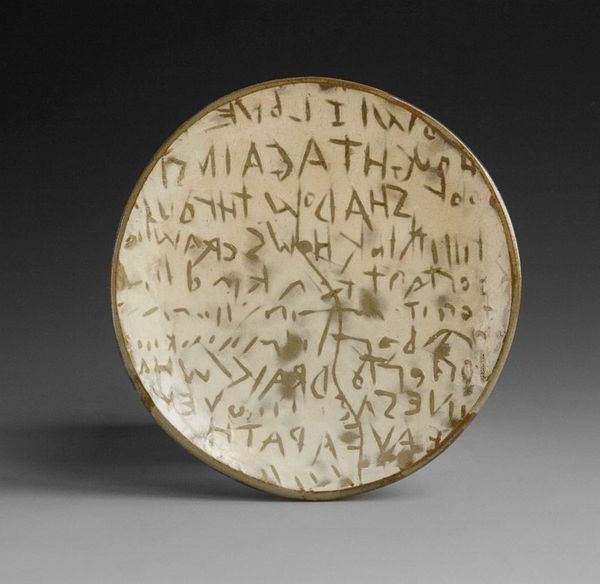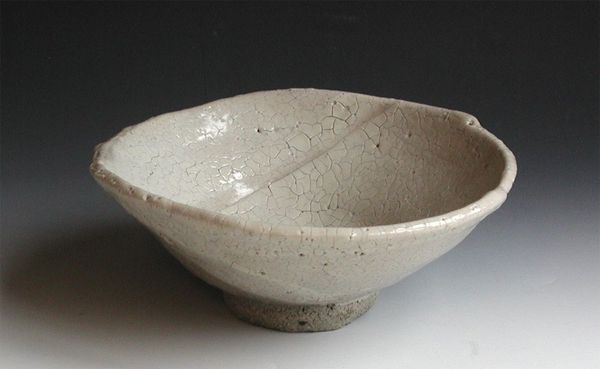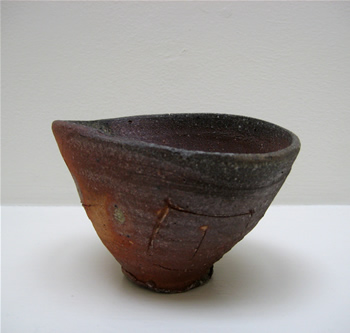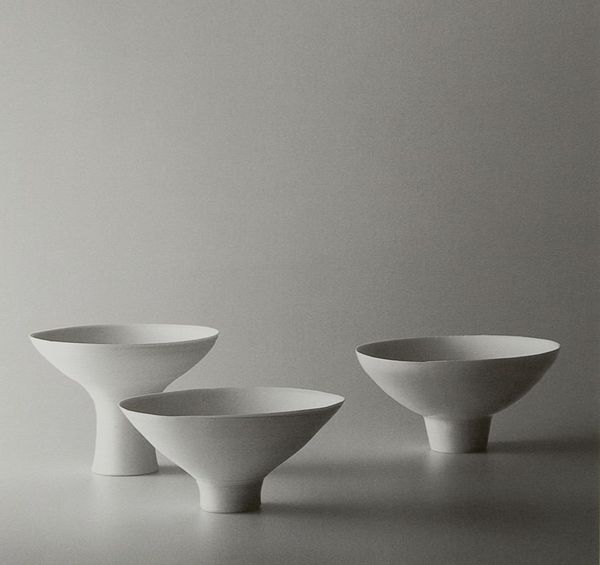Two weeks ago I fractured my tibia while walking two dogs. One of the
dogs had run off on
the scent of something and when I called him back he came running full
tilt and
ran directly into my knee. The collision knocked me down and I knew
that I could not walk. I told the dogs to get my husband, but they had
not seen enough Lassie episodes to
understand. They licked my face. I scooted on my butt closer to the
house until
he could hear my calls for help. A trip to the emergency room refreshed
my
understanding of anatomy. The tibia is the big bone in the lower leg.
Now I am
on crutches for eight weeks.
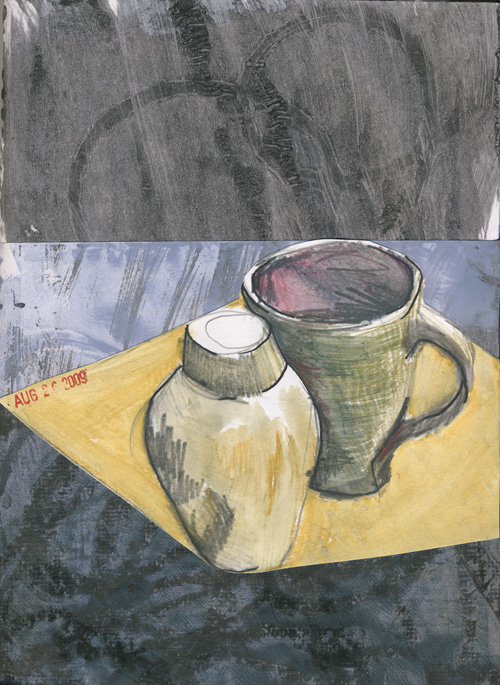 By
nature I am a multi-tasker But navigating
on crutches has taught me I have to slow down and be a uni-tasker. I cannot
carry things when I walk, so I draw what is in front of me. I can't put any
weight on my right foot, so for the moment, I have let go of clay work. My drawing
keeps my mind engaged with what I see in the use of pots and what I dream of
making when I get back to the studio.
By
nature I am a multi-tasker But navigating
on crutches has taught me I have to slow down and be a uni-tasker. I cannot
carry things when I walk, so I draw what is in front of me. I can't put any
weight on my right foot, so for the moment, I have let go of clay work. My drawing
keeps my mind engaged with what I see in the use of pots and what I dream of
making when I get back to the studio.
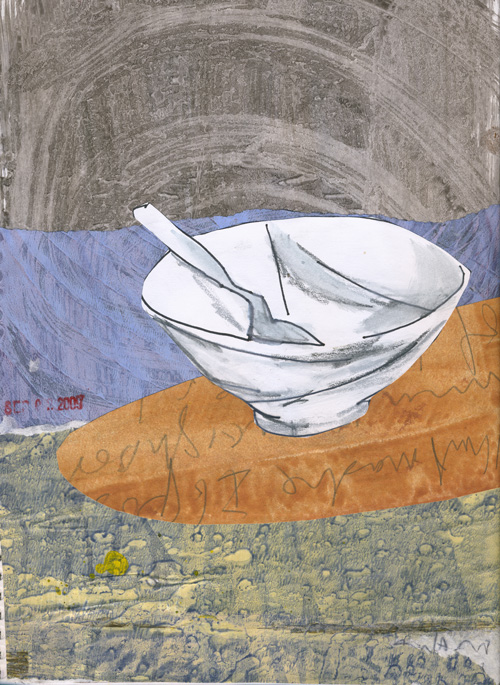
 By
nature I am a multi-tasker But navigating
on crutches has taught me I have to slow down and be a uni-tasker. I cannot
carry things when I walk, so I draw what is in front of me. I can't put any
weight on my right foot, so for the moment, I have let go of clay work. My drawing
keeps my mind engaged with what I see in the use of pots and what I dream of
making when I get back to the studio.
By
nature I am a multi-tasker But navigating
on crutches has taught me I have to slow down and be a uni-tasker. I cannot
carry things when I walk, so I draw what is in front of me. I can't put any
weight on my right foot, so for the moment, I have let go of clay work. My drawing
keeps my mind engaged with what I see in the use of pots and what I dream of
making when I get back to the studio. 
"I'm a painter," says the sculptor June Leaf, "but sculpture is my anatomy lesson."
